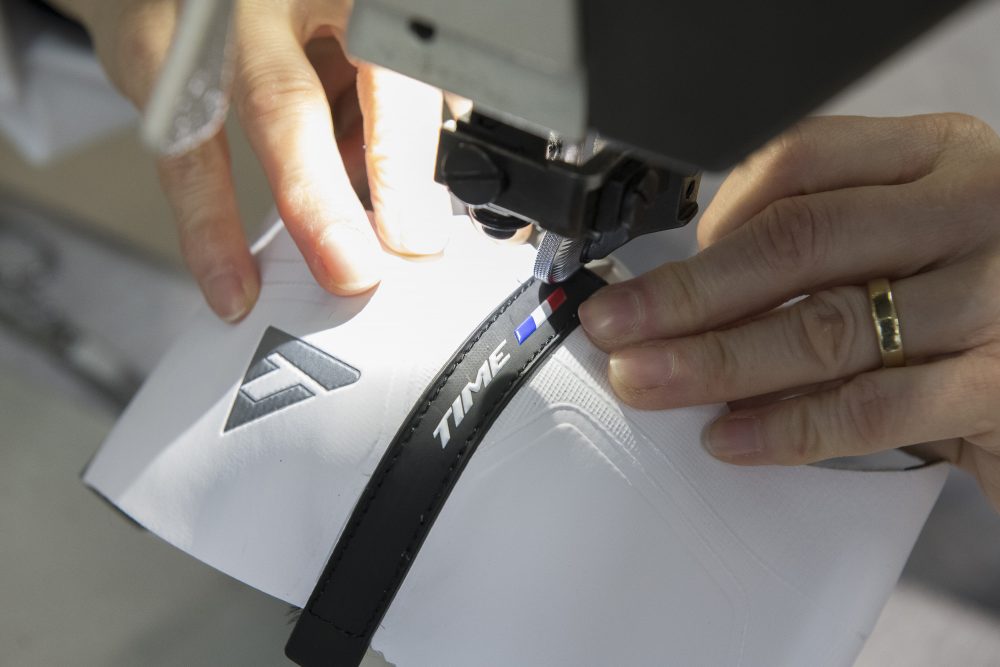Time Osmos: iconic French brand's first new shoe in nine years
French company gets its foot back in the door with a new range of three top-end shoes


Nine years since its last shoe Time has launched the Osmos, a range of three high-end shoes developed at its new owner Rossignol’s R&D facility at Montebelluna, Italy, the global capital of sports footwear.
Time, whose shoes Greg LeMond was famously wearing when he won the 1989 Tour de France, is aiming to get back on an equal footing with the global brands who have come to dominate the world of cycling footwear in its absence.
Rossignol bought Time in 2016 following the death of founder Roland Cattin in 2014. Global brand manager Ryan Green said: “The company was leaderless, the brakes were on, Rossignol was looking for a bike brand and it was a good fit from a philosophy standpoint.”
Rossignol, originally a winter sports brand but which has also now bought US bike company Felt, appears determined to return Time to the top of the cycling shoe tree and is also now producing its frames and pedals.
Last comes first
With access to over 3,000 3D-scanned feet at Montebelluna, where selected top-of-the-range ski boots and ice skates are still produced, Time had a huge data pool from which to engineer the last. It also used competitors’ benchmarks and static and dynamic testing to determine the correct curvature of the underneath and a heel hold without pressure points.

Each step of the production process over the two years of the Osmos’s development took place at Montebelluna, from biomechanical foot studies, product conception and iterative prototyping through to production, follow-up testing and product deployment.
The latest race content, interviews, features, reviews and expert buying guides, direct to your inbox!
Production of the Osmos shoe range has now been handed over to a factory in Romania, where Rossignol’s ski boot lines are also produced, although Time continues to test and refine the shoes at Montebelluna — which includes working out ways to produce them more cheaply.
Seamless upper
For the choice of materials Time looked at competitors’ shoes to establish whether they were going in the right or wrong direction as well as deploying the research lab at Montebelluna to create an upper that is light, wraps the foot comfortably, is durable and breathable.

The result is a seamless upper for all three Time Osmos models with hot-welded spider-web reinforcement on the inside. The top model, the Osmos 15, gets more reinforcement.
For closure Time went for two Boa dials for the Osmos 15 — red as a neat homage to the red Velcro straps of the original Equipe shoe of 1988 — while the 12 gets one Boa and a Velcro strap and the 10 a single Boa.
Good for the sole
The Time Osmos 15 sole is 100 per cent carbon-fibre with ‘foils’ for increased rigidity while the Osmos 12 gets a composite sole (polyamide with 20 per cent carbon) with a 100 per cent carbon stiffening plate at the cleat area. The Osmos 10 sole is all composite.

Time designed what it calls the Sensor 2 system for the footbed or insole, which is a foam material intended to limit vibrations while maintaining rigidity. A Sensor 2+ was designed specifically for the flagship Time Osmos 15, which has high-density EVA inserts in the metatarsal zone to optimise power transfer and is more rigid than the insoles of the 12 and 10.
Compatibility
Time claims the Osmos shoe combined with its own cleats and pedals gives one of the smallest biopositions on the market — bioposition being the distance between the outsole and the pedal spindle. The Osmos shoes are compatible with other three-hole cleat patterns without the need for adaptors.
Time Osmos weights
The Time Osmos 15 weighs a claimed 480g for the size 42, which Time admits is not the lightest on the market because that would sacrifice comfort. The Osmos 12 weighs 500g and the 10 is surprisingly the same as the flagship 15. The weight difference is down to different reinforcement methods, according to Time, with the Osmos 10’s meshless polyamide upper supplying enough support on its own.
The Osmos 15 has an SRP of £329 while the Osmos 12 will sell for £279 and the Osmos 10 £229. All three will be available exclusively from Merlin Cycles.
Simon Smythe is a hugely experienced cycling tech writer, who has been writing for Cycling Weekly since 2003. Until recently he was our senior tech writer. In his cycling career Simon has mostly focused on time trialling with a national medal, a few open wins and his club's 30-mile record in his palmares. These days he spends most of his time testing road bikes, or on a tandem doing the school run with his younger son.
